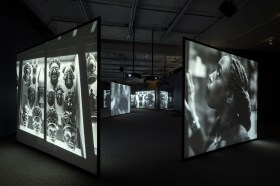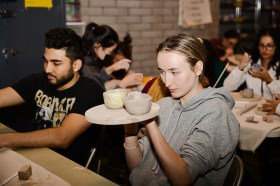The 2024 National Visual Art Education Conference (NVAEC) took place last week (22-24 January) at the National Gallery of Australia (NGA) in Kanberri/Canberra, with online options, as well as hubs in Perth and Tasmania.
Held every second year, and now in its fifth incarnation, the conference sees visual arts teachers, educators, artists and curators visiting the nation’s capital from around the country, gathering (or logging in) for two-and-a-half days of inspiring keynote presentations, as well as hands-on workshops with practising teachers and gallery staff.
Art teachers matter
If there was one message NVAEC attendees received this year, it was that visual art teachers matter. They change lives and they participate in changing the national culture at its roots.
Led by the NGA’s Head of Education, Leanne Waterhouse, and Head of Learning, Georgia Close, the Gallery has a large team of educators and learning assistants involved in creating the education program and teaching and learning resources. (The conference also qualifies as a form of accredited professional development.)
Education is a key part of most gallery missions and remits today. As NGA Director, Dr Nick Mitzevich, said in his introduction: ‘Learning and education are such an important part of the fabric of the National Gallery that, out of the six directors of the NGA since it was initiated, four of us – me included – started our careers as art teachers or art educators. And so the institution has been woven with that experience.’
‘Repositioning’: a theme and a challenge
The theme of NVAEC 2024 was ‘Repositioning’, thus challenging attendees to engage with art, pedagogy and the changing world through new perspectives and approaches, and a constant questioning of who we are, what we’re doing and how this needs to change. The theme of ‘Repositioning’ was explored through several key lenses, most crucially First Nations knowledges, but also around the use of ground-breaking technologies and issues of gender equity, access and well-being.
This year, two major exhibitions currently on display at the NGA during the conference formed focal points for a number of talks and activities on offer. They were Emily Kam Kngwarray and Jordan Wolfson’s Body Sculpture – the latter of which was the subject of a plenary talk and response by Russell Storer (National Gallery Head Curator, International Art) in conversation with Associate Professor Andrew Meares (ANU School of Cybernetics).
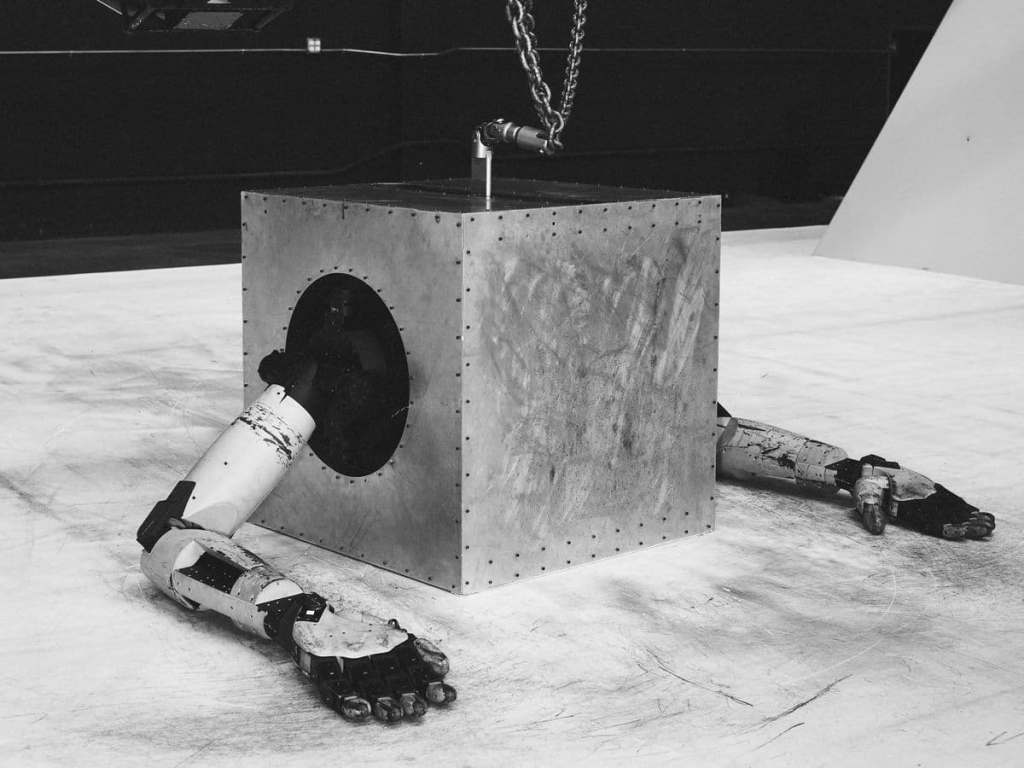
Read: Experiencing Jordan Wolfson’s $6.6 million sculpture
Kelli Cole on Emily Kam Kngwarray
A highlight of the first day, was the warm and energetic curatorial introduction to Emily Kam Kngwarray given by co-curator Kelli Cole who, together with Hetti Perkins, selected the works that comprise the extraordinary “living retrospective” of this internationally renowned First Nations artist.
Cole, a Warumungu and Luritja woman from central Australia, and curator of Special Projects for the Aboriginal and Torres Strait Islander Art Department at the NGA, gave an illustrated overview of Kam Kngwarray’s life in the Central Desert, her artistic community, and the development of her practice from making work with the Utopia Women’s Batik Group in the 1970s, to her large-scale paintings of yams, emu footprints and seedpods in the ’80s and ’90s.
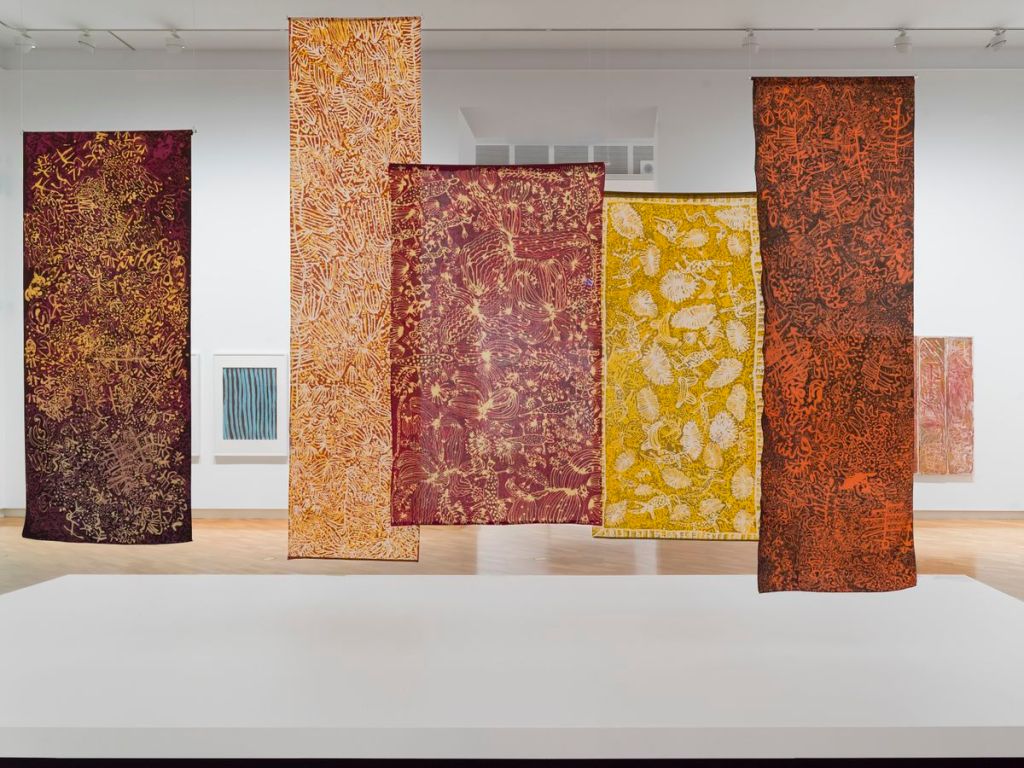
Speaking to the theme of ‘Repositioning’, Cole explained the intensive and immersive process of spending time on Country, along with Perkins, and gaining full community consultation around each piece of art included in the exhibition. She talked about the importance of deep research and developing unhurried, respectful relationships. She encouraged educators to seek out First Nations authors and curators when looking for written work around First Nations artworks, and explained the positioning and hanging of pieces, and the effort made to avoid didactic, inaccessible wall labels.
Read: Repositioning Emily Kam Kngwarray and why now?
Tony Albert
Aboriginal artist and educator Tony Albert (Girramay/Yidinji/Kuku-Yalanji peoples) gave another rousing keynote speech, with much praise for the role of teachers in changing lives and empowering young people. ‘I would not be in the position I’m in without the extraordinary educators who saw the potential and enthusiasm I had for art and creativity,’ said Albert.
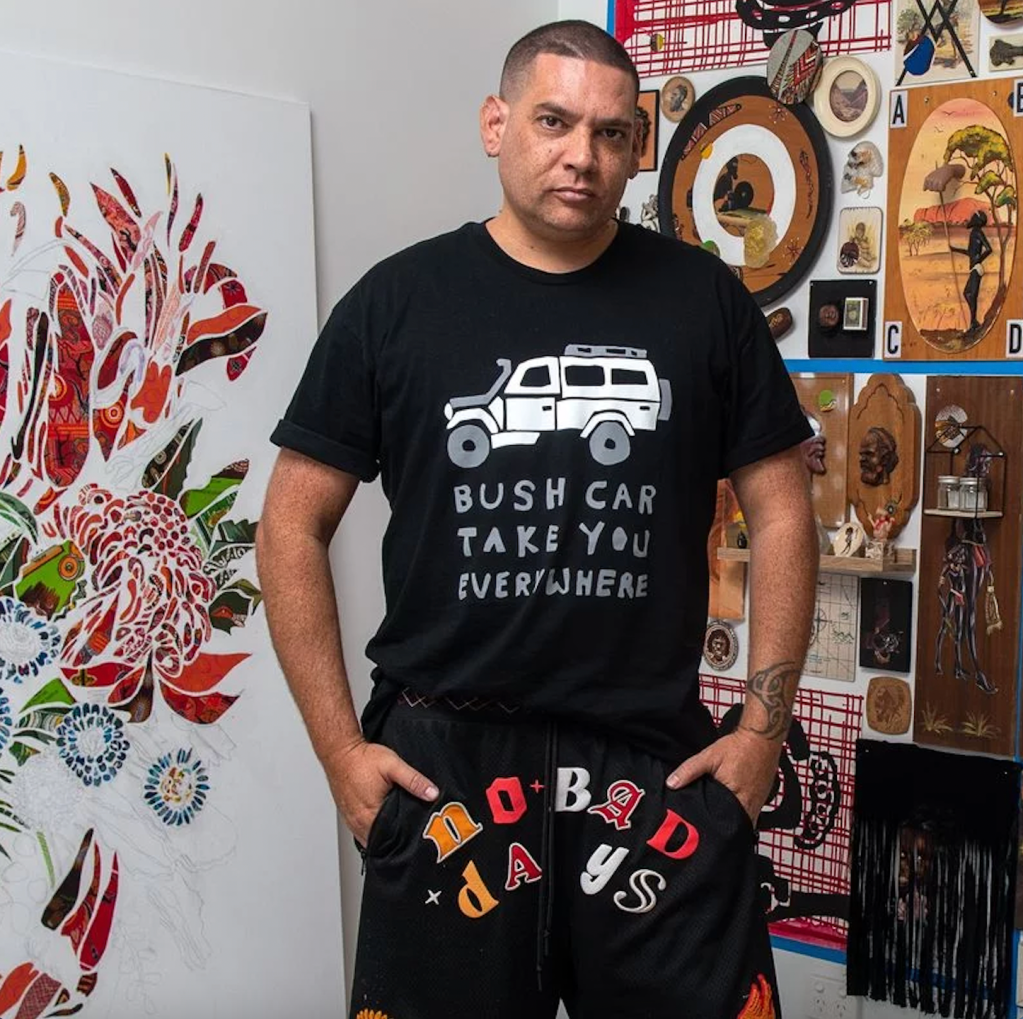
Albert talked about his high school art teacher, Mrs Wilson, who changed the trajectory of his life with her encouragement. Along with his sister, he was the only Indigenous kid at school and said his family did not know or visit art institutions. In the present day, as a kinship-carer of an eight-year-old, Albert said he was heartened to see change and progress. ‘I’m inspired to walk into school daily and see the abundance of art and Indigenous iconography attached to the school system,’ Albert said, while acknowledging how far we still have to go.
Known for his bold and overtly political works that examine and challenge racism, Albert explained his approach with a slideshow of select pieces and the stories and ideas behind them. These artworks, combining text, video, drawing, painting and three-dimensional objects, are clearly the pop culture opposite of Kam Kngwarray’s landscapes, yet Albert argued that while many think of her beautiful and abstract works as being apolitical, they actually ‘represent the pinnacle of political art in this country’ – because of their insistence on place and their connection to Country, they are powerful arguments for Aboriginal land rights.
If there was another key message across sessions at NVAEC 2024, it was this repositioning and centring of First Nations knowledge, art and experience. As Albert himself said, nobody knows everything, and we’re all going to ‘get it wrong sometimes’ – whether that’s in using the wrong language or approach – but the important thing is to keep trying and keep learning.
Ming Wong and the repositioning of identity
Singaporean artist Ming Wong (Chinese: 黄汉明; pinyin: Huáng Hànmíng) gave a terrific and entertaining keynote speech. An artist and educator known for his reinterpretations of iconic films and performances from world cinema in his video installations, Wong’s works often feature “miscastings” of himself in roles of varied identities.
Wong talked about his upcoming work for the 24th Biennale of Sydney (9 March – 10 June) where he has created poster art for Stanley Kramer”s 1958 apocalyptic film On the Beach, featuring giant billboards with his own image replacing that of the Hollywood actors, Ava Gardner and Gregory Peck.
Wong talked about how he started his career as an educator in London where he began to think about educating as “enabling” and how that idea has stayed with him in his role as Professor in Performance in the Expanded Field at the Royal Institute of Art in Stockholm. Using a large collection of slides and videos, Wong spoke about seeing ‘the role of the artist as an enabler, somebody who can make things happen, sharing knowledge and journeys’. He talked of his “Cantoneseness” and his own identity, growing up in Singapore and constantly navigating different perspectives. He explained the construction and dismantling of Wayang Spaceship, a major public art exhibition commissioned by The Everyday Museum at the Singapore Art Museum, which ran from July 2022 to December 2023.
Wong spoke of the transformation of his own approach and the need for contextualisation; he now finds young viewers lack awareness of the films he is referencing, and so there is a need to include and re-edit back in the original for reference. ‘Aim for as wide an audience as possible, while keeping true to the specificities of your perspectives and research – a huge challenge but very interesting!’
Teachers’ Voice Sessions
As part of the 2024 NVAEC program, educators were invited to share their practices and experiences in a series of 20-minute presentations that spoke to the broad theme of ‘Repositioning’. The NGA’s Head of Learning, Georgia Close, said that submissions were chosen by a ‘curatorium of representatives from art organisations around the country, to represent a balance of voices from across different sectors, states and regional areas’. These sessions were a trove of examples and stories, especially from the coalface of the classroom.
Highlights included:
- Jane Polley, Curriculum Specialist for the Arts at ACARA (the Australian Curriculum, Assessment and Reporting Authority), gave a great introduction to Version 9.0 of the Australian curriculum which she said has been refreshed, decluttered and recentred. She explained how teachers can navigate and use the new website as the underpinning of everything they do in class. Key changes to this version of the curriculum include a separate year entry for Foundation Year, an explicit foregrounding and prioritisation of First Nations content and support for how to incorporate it respectfully and responsibly.
- From regional NSW, Bill Tink, a former high school art teacher and now environmental learning adviser at NetWaste, explained his role working with local councils to run Waste-to-Art competitions and exhibitions that showcase artworks made from materials normally thrown away. These exhibitions are themed on certain waste streams (last year, clothing and textiles) and have categories for professional artists, community members and students at various levels. Tink’s passion and enthusiasm were on show, alongside inspiring images of artworks, including one by a Dubbo student of an intricately crafted tutu made using Coles bags for the bodice and aluminium Coke cans for the skirt. (Tink noted the careful approaches to embellishment.) He talked about how using art to start conversations around waste and reuse is far superior approach to lecturing or hectoring.
- Mary Hurley McGillivray, art historian, PhD researcher and viral TikToker, began her session by saying she believes that researchers doing work fuelled by public money have a duty to make that work accessible to the public. Part of her work is around demystifying the world of art history. She recently became interested in how online video could be used in education, after being employed by ABC Education to create a series on Renaissance Italy that met curriculum requirements. While acknowledging concerns around algorithms and TikTok, McGillivray’s main point was that there is a missing link between the resources and riches in our cultural institutions, and where the young people actually live and play and learn these days – with social media video. McGillivray said that current estimates put video streaming at 80% of all internet traffic, and encouraged educators to learn how to make social video content. ‘My proposition to you: just pick up your phone and you can become the missing link, because goodness knows I can’t make all the art history TikToks!’
- Vide Freiberg, an experienced art teacher on the Cape York Peninsula in Queensland, gave an insightful talk about cultural sensitivity and navigating Indigenous art resources in education, giving detailed examples of how she has ‘got it wrong’ in the past, and evolved in her own understanding and practice. Freiberg, who doesn’t identify as First Nations, teaches at the Western Cape College in Weipa where 72% of students identify as Aboriginal or Torres Strait Islander. She talked about the importance of auditing your resources, avoiding ‘Aboriginalism’ – stereotypes, clichés and simplistic representations that freeze identity in the past through romantic or othering discourses. She used the example of Vernon Ah Kee’s drawing, ‘Neither Pride nor Courage’ and how a dialogue with the artist had revealed her misunderstanding of it.
Hands-on workshops
Over the course of two days, attendees had multiple streams of hands-on workshops to choose from to reinvigorate their own artistic practice or their teaching. These included: ‘Creative Starting Points’ with Nicole Barakat, ‘Investigating the Body as Site’ with Wendy Ramsay and Helen Yip, and ‘The Art of Writing’ with Anna Carrig.
Jemima Saunders, a Northern Territory-based artist and visual arts teacher at Darwin High School, gave the teacher workshop ‘How to inspire original ideas’. In the lead-up to the conference she spoke to ArtsHub about her approach, the importance of creating a culture of trust and creativity, and ways to get beyond high school art clichés.
Read: How to inspire original ideas in the art classroom
Sarah Eve, an artist and art teacher at Perth Modern High School gave a very necessary workshop entitled ‘Advocating for Visual Arts Careers’ – and ArtsHub will be publishing a version of that soon.
The gist of Eve’s workshop was around the need for schools and teachers to help students and parents see the variety, diversity and sustainability of careers in the arts. Experimenting with AI, Eve has created resources that can be used in the classroom or the careers adviser’s office to help students see beyond the limitations of “famous artist or art teacher” careers. One of Eve’s slides shown as part of her presentation appears below:
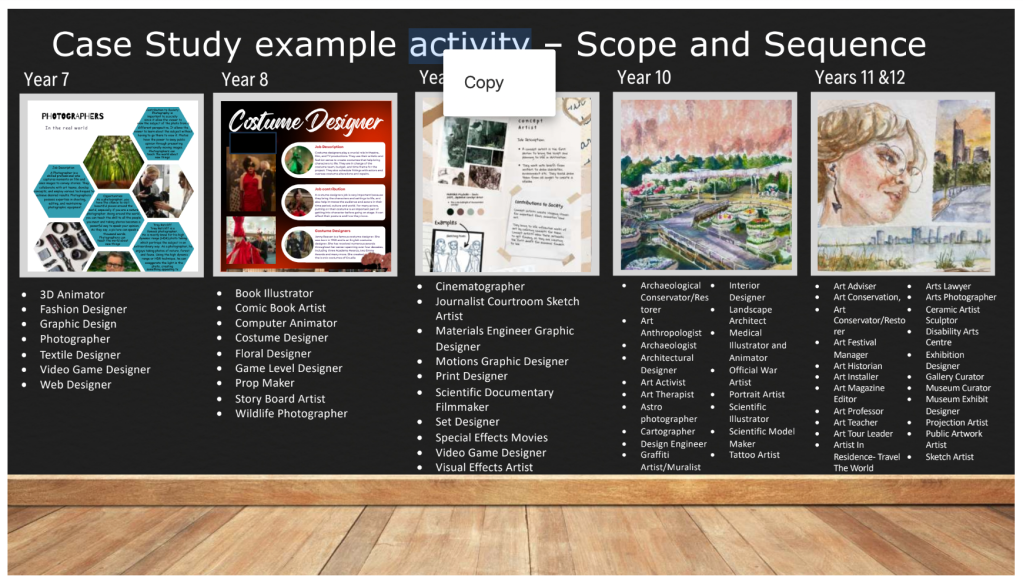
‘Advocating for visual arts careers’ slide by Sarah Eve presented at NVAEC 2024. Image: Supplied.
While it was impossible to cover every session of this year’s NVAEC, for those registered for the conference all of the keynotes presentations were recorded and are available to revisit, along with further educational resources from the NGA, which are also available to all on the Gallery’s website.
The author attended sessions of the 2024 NVAEC online, courtesy of the National Gallery of Australia and NVAEC.



